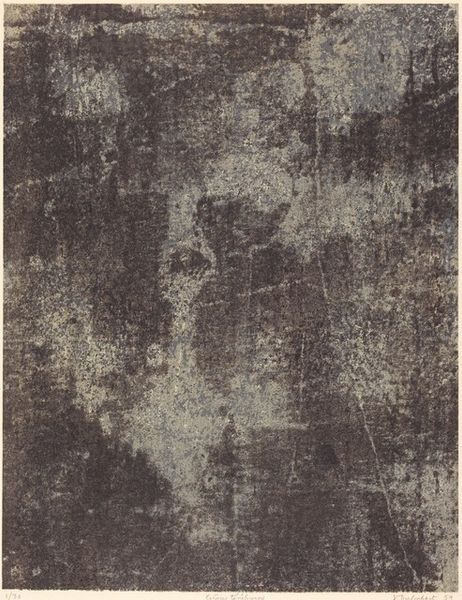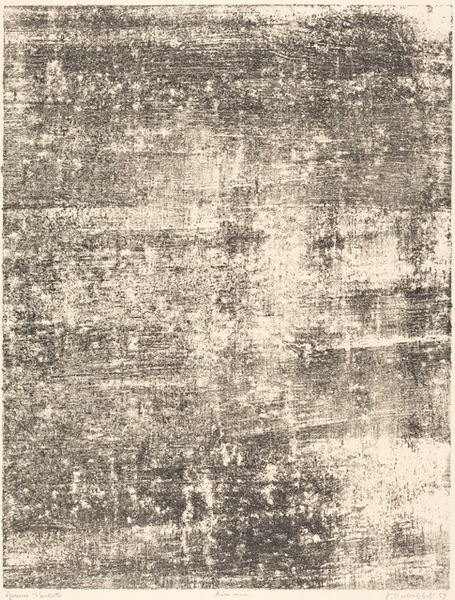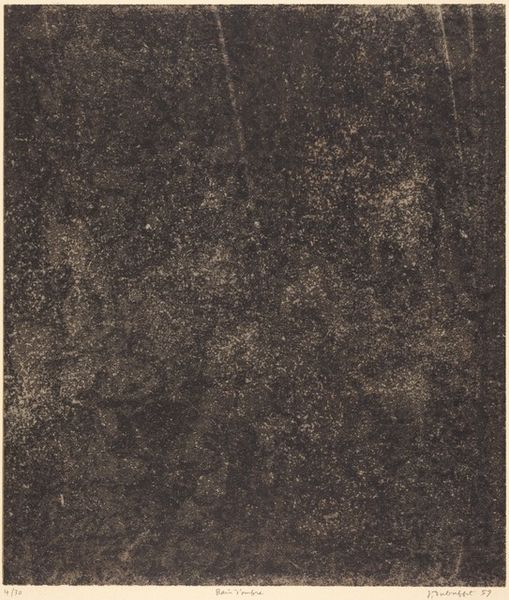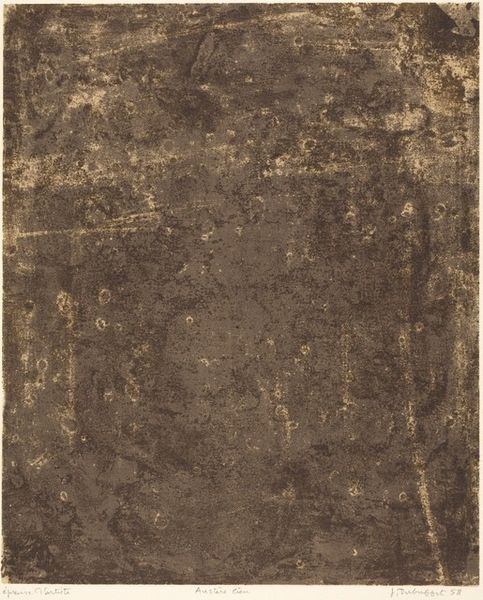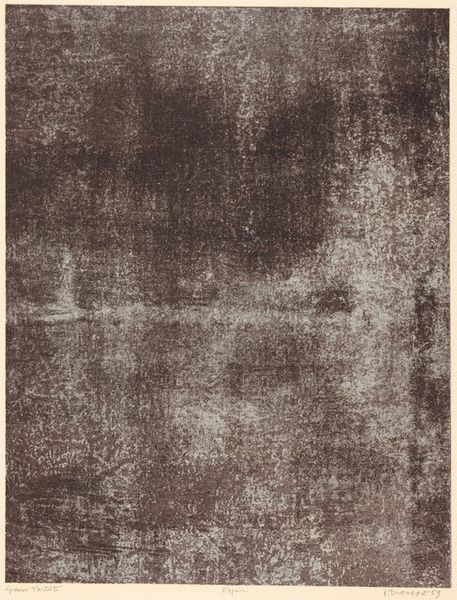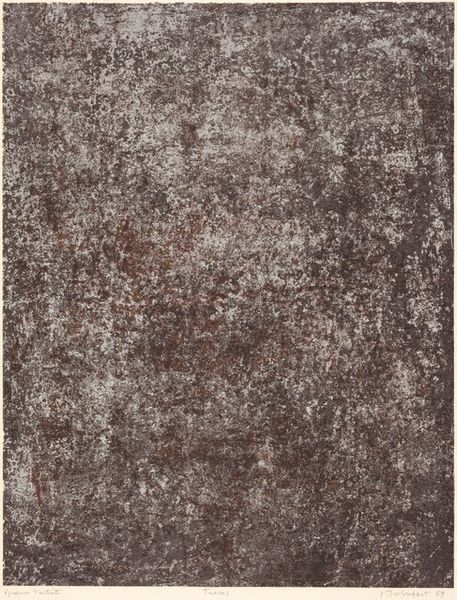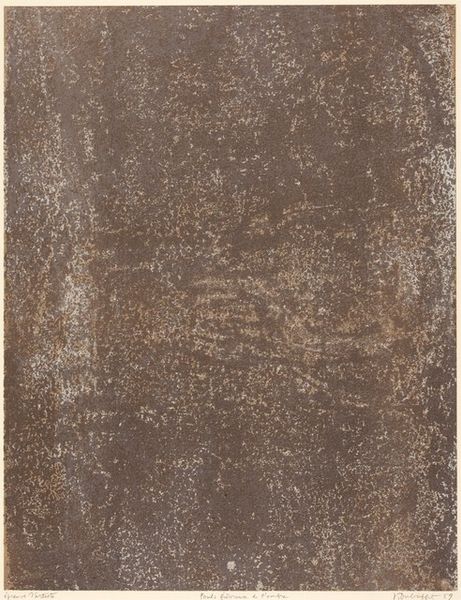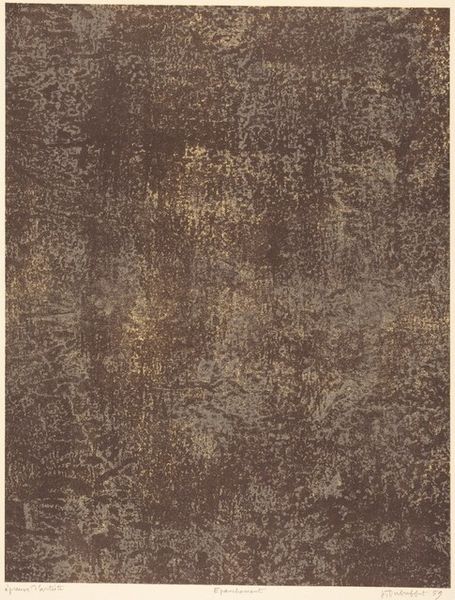
print, frottage
# print
#
art-informel
#
matter-painting
#
abstraction
#
frottage
#
monochrome
Copyright: National Gallery of Art: CC0 1.0
Curator: Before us hangs Jean Dubuffet's "Situation temporaire," a print created in 1959 using the frottage technique. Editor: Woah. At first glance, it feels like looking at an aerial view of some ravaged landscape, or maybe the surface of another planet entirely. There's a certain density to it that feels almost geological. Curator: That's perceptive. Dubuffet was a leading figure in Art Informel, often associated with matter painting. Here, the frottage process highlights the textures inherent in materials. It seems he's urging us to contemplate the fundamental qualities of surface and form. Editor: Exactly. And temporary situations are all about the interplay between structure and change. Does the monochrome lend itself to stripping away all context except raw existence, where all moments are in transition? It's beautiful and unnerving at the same time. Curator: I concur, that it evokes tension through stark materiality. The use of monochrome encourages deep observation, and also points towards an engagement with a very reduced vocabulary within the abstract expressionist aesthetic, don't you agree? Editor: Definitely reduced but it also reminds me that everything is built upon layers and impressions – of marks that other things make. Like the ghost of touch rendered visible, all those buried, unseen stories erupting at the surface. It really throws you back to how we are interconnected and built on previous experience. Curator: In conclusion, Dubuffet asks us to engage with texture, process, and being, if only to recognize the provisional, shifting foundations on which existence itself resides. Editor: Right, to acknowledge those raw ingredients, the bits we often ignore. Like he's inviting us to reconsider our whole perspective through a microscope of feeling. Very cool.
Comments
No comments
Be the first to comment and join the conversation on the ultimate creative platform.

